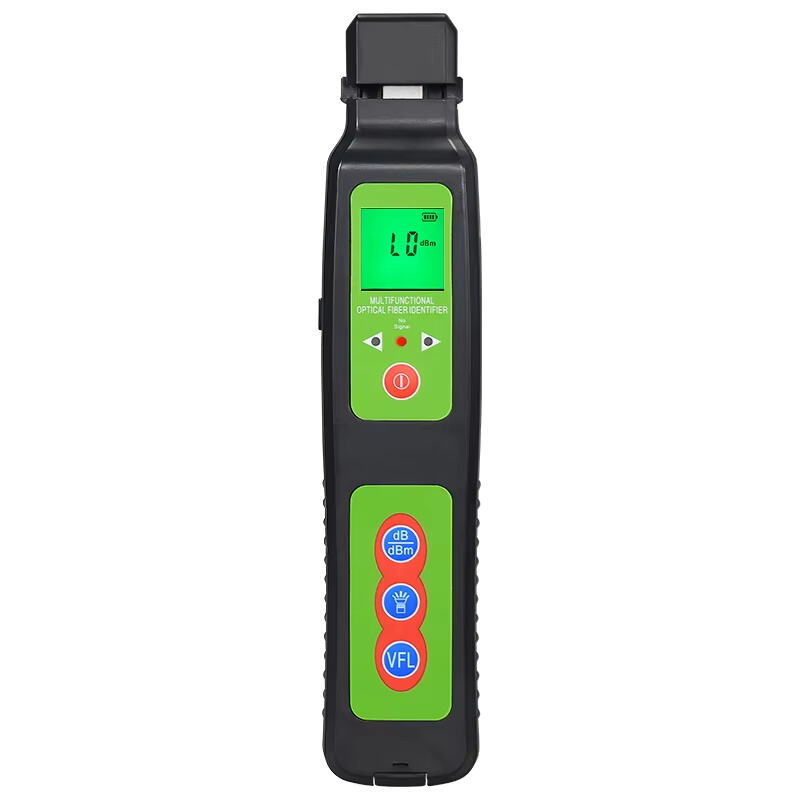Introduction to Fiber Optic Identifiers in Network Troubleshooting
The Growing Complexity of Network Diagnostics
More people wanting faster internet speeds has completely changed how we build our networks these days. We now see much more complicated systems everywhere, especially when it comes to fiber optic connections. According to Cisco's yearly report on internet trends, worldwide data usage keeps growing around 20 percent each year. That means our networks keep getting bigger and better all the time. With this kind of expansion, old school ways of fixing network problems just don't cut it anymore. They simply aren't equipped to handle all the data flowing through today's systems. Take fiber optics for example they need really careful checking and testing before anything goes live to make sure everything works right. All this added complexity makes good diagnostic tools absolutely essential if companies want to properly maintain their expanding optical network infrastructure without constant headaches down the road.
Simplifying Diagnostics with Fiber Optic Identifiers
Fiber Optic Identifiers or FOIs have become really important for making network diagnostics easier. Techs get instant information when they're trying to figure out what's wrong with a system. These devices speed things up because they can spot which fibers are active and where problems might be happening all while keeping the network running normally. Real world tests show that FOIs cut down on time spent troubleshooting complicated setups. Technicians can actually find issues much quicker than before. The whole process becomes simpler so fixes happen faster and with less hassle. This makes fiber optic networks more reliable day to day. Most companies now see FOIs as essential equipment for anyone dealing with network maintenance these days.
Key Benefits of Using a Fiber Optic Identifier
Quick Identification of Live Fibers
Network techs rely heavily on Fiber Optic Identifiers (FOIs) because these devices let them spot active fiber connections right away without messing up services. The speed at which they work really matters since downtime costs businesses around $5,600 every single minute based on what the industry reports. When FOIs help technicians quickly find those live fibers, it stops expensive service hiccups from happening. Plus, keeping data flowing continuously means networks stay efficient and operations run smoothly without unexpected breaks.
Enhanced Accuracy in Signal Detection
FOIs come with sophisticated signal detection tech that can pick out different kinds of signals while keeping data integrity intact. What this means in practice is better diagnostic results with way less guesswork when something goes wrong. Studies indicate FOIs boost accuracy around 60 percent over older approaches, though actual gains depend on specific situations. For network managers, these improvements matter a lot since they help keep systems running smoothly and cut down on those frustrating errors that pop up during testing phases.
Time Efficiency in Fault Localization
A major benefit of Field Operations Interfaces (FOIs) lies in how they cut down the time needed to find faults. These systems make it much easier to spot problems quickly, which means less downtime and faster fixes when something goes wrong. Take real world situations for instance. Technicians working with FOIs often manage to track down network issues within just under an hour, whereas without them, similar tasks might drag on for multiple hours. The savings in time really matter because they mean fewer service outages and better overall reliability for anyone depending on those networks, especially critical infrastructure operators who cannot afford extended interruptions.
Non-Destructive Testing for Network Integrity
FOIs don't mess with the actual hardware when checking out problems, so networks stay intact throughout the diagnostic process. These tools work their magic without ever touching those delicate fiber optic cables, which means no risk of scratches or worse, actual breaks in the line. Tech pros across the board stress how important this is because once something gets physically damaged, data just stops flowing properly and fixing it ends up costing way more money than anyone wants to spend. We've all seen what happens when a small scratch turns into a major headache down the road.
How Fiber Optic Identifiers Work
Macro-Bending Technology for Non-Invasive Detection
Fiber Optic Identifiers or FOIs make use of something called macro-bending tech, which is really important for checking fibers without messing with them. What happens here is simple enough: when we gently bend the fiber cable just right, some light escapes from inside the core, and our detection equipment picks this up. The cool thing about this approach? Technicians can tell if data is actually flowing through a fiber without having to cut it open or shut down anything else on the network. That means no downtime and systems stay running smoothly. Traditional methods often require cutting into cables, which obviously causes problems for anyone relying on those connections. With macro-bending, though, there's almost no risk involved. Plus, these tools work great with current network setups so companies don't have to spend tons of money rewriting their entire infrastructure just to get better diagnostics.
Signal Direction and Traffic Analysis
FOIs don't just detect issues but give valuable information about where signals are going and how much traffic is moving around. Network managers can track exactly how much data is passing through their fiber lines and see where it's headed. This helps them make sure everything runs smoothly while catching any spots where too much data might cause problems down the road. Studies show when companies start using these kinds of traffic analysis tools, including FOIs, they usually see better control over their bandwidth and improved services for customers. Technicians who map out data flows tend to spot issues earlier too. They can fix things before anyone even notices there's a problem, which keeps networks running at peak performance most of the time.
Real-Time Data Visualization and Interpretation
Fiber optic identifiers give network managers real time visuals of what's going on, which makes all the difference when it comes to making decisions about network issues. When these systems turn mountains of raw data into something people can actually see and understand at a glance, techs spend way less time trying to figure out what those numbers mean. Most folks in the industry find that things really start clicking when they hook these identifiers up with some pretty advanced software packages meant specifically for looking deep into network performance. The combination gives network managers actual information they can use right away, so problems get fixed faster and plans for future growth make more sense. Think of these tools as basically a control panel for the whole network, constantly showing where things might be breaking down or acting strangely. This kind of constant watch helps keep everything running smoothly without anyone having to babysit every single component around the clock.
Conclusion: Optimizing Network Maintenance with Fiber Optic Identifiers
Future-Proofing Network Diagnostics
Adding Fiber Optic Identifiers (FOIs) to network systems makes sense if companies want their networks to last through future changes. These identifiers help improve what technicians already do when maintaining networks, plus they can handle whatever comes next in tech development and the ever increasing amount of data flowing through systems. FOIs really help with figuring out problems faster and work well alongside newer tech so networks stay strong even as traffic grows. Industry folks have noticed something interesting lately - more companies are looking at tools that don't just fix problems after they happen but actually predict them before they cause issues. That's exactly why FOIs are becoming popular now. As technology keeps advancing at lightning speed, businesses need better tools than ever before to keep everything running smoothly without constant breakdowns.
Cost Savings Through Proactive Troubleshooting
Fiber Optic Identifiers really help cut down on expenses when it comes to fixing network problems before they become major headaches. When these identifiers detect issues early on, companies see fewer unexpected shutdowns and less severe ones too. The bottom line? Less time spent waiting for repairs means money saved. Financial reports from several telecom firms actually show pretty impressive savings over time after implementing this technology. Most of those savings come from better diagnosis tools and smarter maintenance practices that stop technicians from chasing ghosts all over the network. For businesses running large scale networks, investing in FOIs makes sense both financially and operationally. Many IT managers we've spoken to say their networks run smoother and cleaner since adopting this approach, giving them peace of mind in an industry where every minute of downtime costs real money.
FAQ
What are Fiber Optic Identifiers?
Fiber Optic Identifiers are diagnostic tools used to identify live fiber connections and troubleshoot network issues without service disruption.
How do FOIs enhance network troubleshooting?
FOIs streamline network diagnostics by enabling quick identification of live fibers and non-intrusive fault detection, thereby reducing downtime and improving accuracy.
What technology do FOIs utilize?
FOIs use macro-bending technology for non-invasive detection, allowing technicians to perform diagnostics without disrupting the network.
Why are FOIs considered cost-effective?
FOIs contribute to cost savings through proactive troubleshooting, leading to fewer unplanned outages and reduced maintenance costs, optimizing financial investments in network infrastructure.







